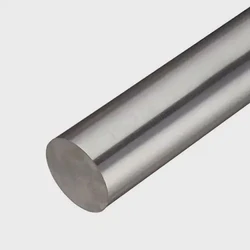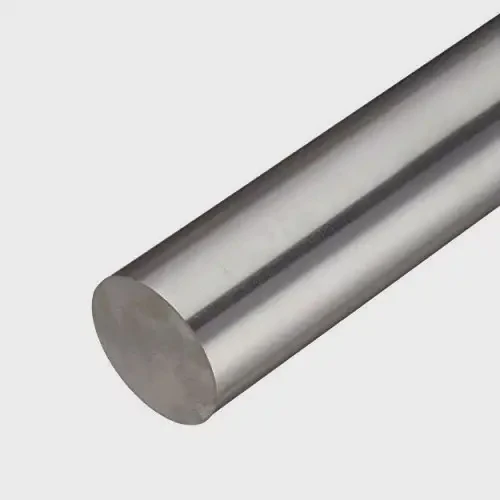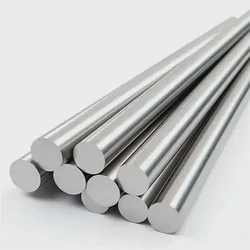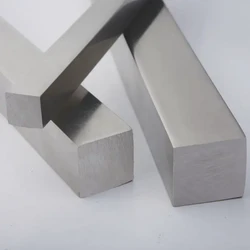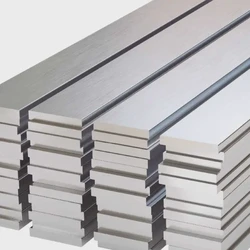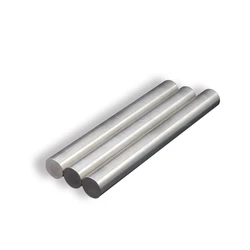ASTM A582 / A582M
We offer ASTM A582 / A582M and related grades with 100% factory direct pricing and free quotes available within 6 hours.
We often encounter machining challenges when turning stainless bars into precision components. ASTM A582/A582M was developed to address this. It specifies hot‑ or cold‑finished stainless steel bars—rounds, squares, hexagons—optimized for machinability while retaining corrosion and temperature resistance. Released in 2021, this spec aligns inch‑pound (A582) and SI (A582M) units independently, ensuring global coherence.
Scope and Applications
This spec covers all free‑machining bars except those intended for forging (Note 1). It’s ideal for:
-
Automotive pivot shafts, steering components, and valve guides
-
Aerospace fixtures where precise tolerances and smooth surface finishes are critical
-
Oil & gas tooling requiring both corrosion resistance and chip‑breaking performance
-
General shop‑floor applications: fasteners, fittings, shafts
Moreover, because bars may be furnished hot‑ or cold‑finished, we can tailor surface hardness and mechanical response to shop‑floor needs.
Grades Covered under A582
ASTM A582 includes the following free‑machining grades:
| Grade | Type | Alloy Family |
|---|---|---|
| S30300 (303) | Austenitic (18 Cr–8 Ni + S) | 300 series |
| S41600 (416) | Martensitic + S (0.15 % S) | 400 series |
| 420F | Martensitic (12–14 % Cr) | 400 series |
| S30315 (303Se) | Austenitic + Se | 300 series |
| S20162 (302) | Austenitic (comparable) | 300 series |
We’ll focus on 303, 416, and 420F, the most widely used.
Chemical Composition of Each Grade
We summarize key chemistries in Table 1. Short paragraphs follow each.
Table 1. Chemical Composition (%)
| Element | 303 (S30300) | 416 (S41600) | 420F |
|---|---|---|---|
| C | 0.15 max | 0.15 max | 0.30–0.40 |
| Si | 1.00 max | 1.00 max | 1.00 max |
| Mn | 2.00 max | 1.00 max | 1.25 max |
| P | 0.20 max | 0.04 max | 0.06 max |
| S | 0.15–0.35 | 0.15 min | 0.15 min |
| Cr | 17–19 | 12–14 | 12–14 |
| Ni | 8.00–10.00 | 0.50 max | 0.05 max |
| Cu | — | — | 0.60 max |
| Fe | Balance | Balance | Balance |
The higher sulfur in 303 and 416 promotes chip‑breaking. By contrast, 420F’s elevated carbon yields higher hardness, useful in wear‑resistant applications.
Mechanical Properties and Performance Data
Table 2. Mechanical Properties (Annealed, Room Temp.)
| Property | 303 | 416 | 420F |
|---|---|---|---|
| Tensile Strength | 720 MPa | 690 MPa | 690 MPa |
| Yield Strength (0.2%) | 510 MPa | 485 MPa | 485 MPa |
| Elongation (%) | 36 | 12 | 12 |
| Hardness (HB) | 220 | 262 | 262 |
| Impact (Charpy V) | 120 J | — | — |
Notably, 303 offers greater ductility; 416/420F excel in “turning corners”—they stay in spec under heavy feed rates.
Dimensional Specifications and Tolerances
Bars come in standard sizes: 1/4″–3″ (6 mm–75 mm) diameters; hex and square flats mirror these. Tolerances per ASTM A582 Table 3:
| Size Range | Diameter Tolerance |
|---|---|
| ≤ 1″ (25 mm) | –0 in/ +1–3 Thou (0–0.08 mm) |
| > 1–2″ | –0 in/ +1–4 Thou |
| > 2–3″ | –0 in/ +2–5 Thou |
These tolerances ensure shop‑floor readiness without secondary grinding.
Global Standard Equivalents
Table 3. International Equivalents
| ASTM A582 Grade | EN | JIS | ISO | UNS |
|---|---|---|---|---|
| S30300 (303) | X5CrNi18‑9 | SUS303 | 303S31 | S30300 |
| S41600 (416) | X12CrS13 | SUS416 | 416S31 | S41600 |
| 420F | X20Cr13 | SUS420F | 420F | S42000 |
Consequently, specifiers can seamlessly source from global mills.
Comparisons with Other Stainless Grades
We compare A582 303 vs. A240 304 vs. A276 316 in Table 4.
Table 4. Grade Comparison
| Feature | 303 (Free‑Machining) | 304 (General‑Purpose) | 316 (Marine‑Grade) |
|---|---|---|---|
| Machinability | 80 % of CS | 40 % | 20 % |
| Corrosion Res. | Good | Very Good | Excellent |
| Cost | Moderate | Moderate | High |
| Applications | Shafts, fittings | Food, pharma | Chemical, marine |
However, if corrodion resistance outranks machinability, 304/316 may be better.
Case Study: Machining Efficiency in Automotive Pivot Shafts
Background: A Tier‑1 supplier needed 1,000 pivot shafts (Ø 20 mm × 150 mm) with tight concentricity.
-
Challenge: Conventional 304 bars caused tool wear and poor chip control.
-
Solution: Switched to A582 303 bars.
-
Result: Cycle time dropped by 25 %, tool life up by 30 %, scrap rate fell below 0.5 %.
This “shop‑floor win” underscores the economic value of free‑machining steels.
Procurement Considerations for A582/A582M
When ordering, we recommend:
-
Specify Condition: Hot‑finished vs. cold‑finished—cold yields tighter tolerances.
-
Material Certification: Request certs in accordance with EN 10204 3.1 for traceability.
-
Lot Testing: Ensure at least one hardness test per lot, per spec.
-
Metric vs. Inch Units: Clearly state A582M (SI) if you need metric dimensions.
-
Ultrasonic Testing: For critical applications, add UT to detect internal flaws.
By staying “in spec,” you avoid returns and downtime.
Why Choose Luokaiwei for Your A582 Needs
We at Luokaiwei pride ourselves on:
-
Factory‑Direct Pricing: Competitive CNY 35 / kg for 303, CNY 32 / kg for 416.
-
Global Warehousing: Stocks in Asia, Europe, North America for rapid delivery.
-
24‑Hour Quotation: Shop‑floor lead times minimized.
-
Value‑Added Services: Cut‑to‑length, bar peeling, bar straightening.
Frequently Asked Questions
-
Q: Can A582 bars be heat‑treated?
A: No. They’re supplied annealed—heat treatment can alter machinability and distortion. -
Q: What’s the maximum length available?
A: Standard is 3 m; max 6 m on request, subject to extra handling charges. -
Q: How does 420F differ from 420?
A: 420F adds sulfur for machinability; 420 is tougher but harder to machine. -
Q: Are there low‑carbon variants for welding?
A: Yes—303Se and 416L offer better weldability at slight cost to chip control. -
Q: What inspection reports are provided?
A: We include chemical and mechanical test reports, plus dimensional inspection certificates.
Packing And Delivery

OUR FACTORY





CUSTOMER VISIT

HONOR


Recommended Products
Send Inquiry
